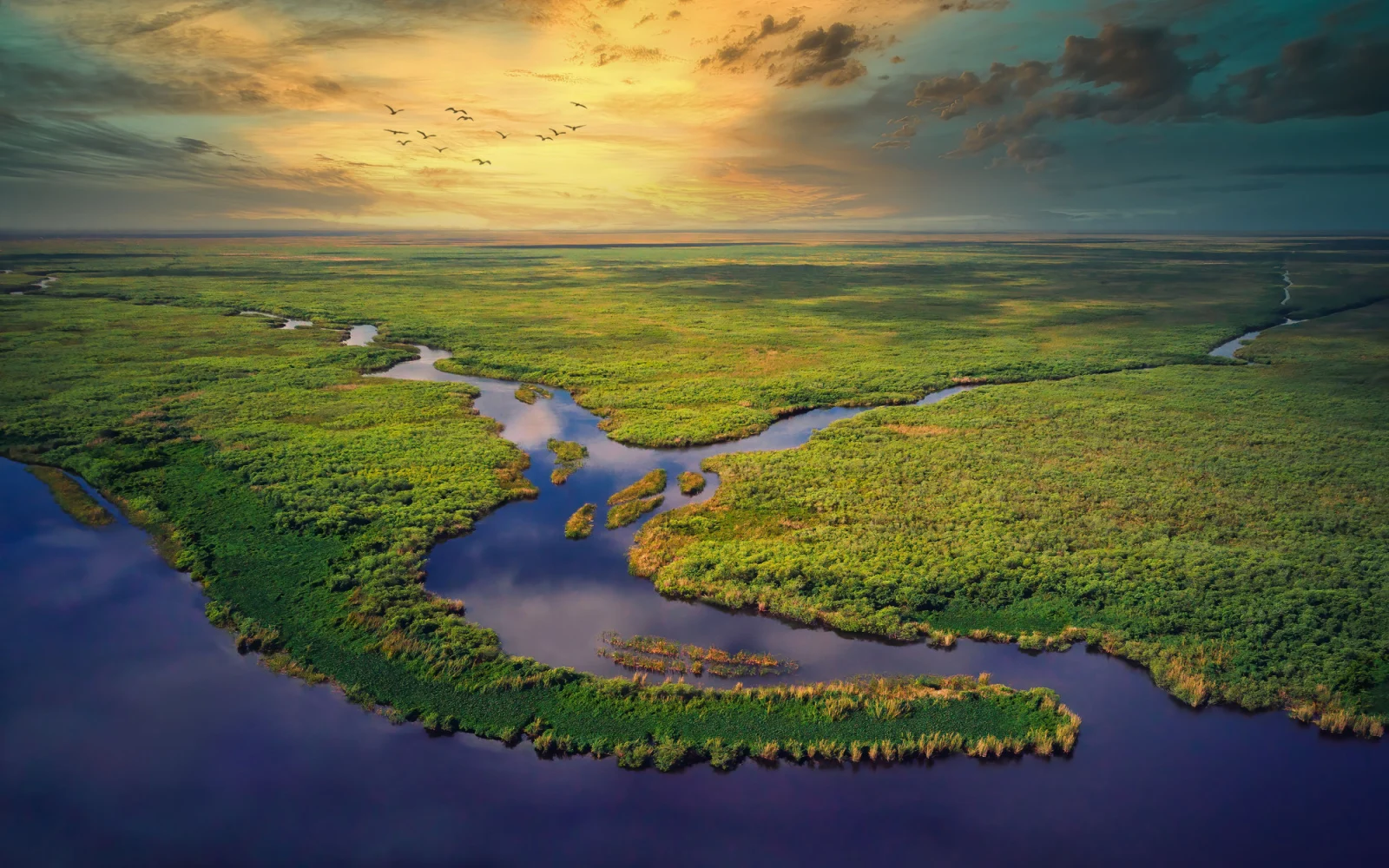What's the best time to visit the Everglades?
The best time to visit the Everglades is from December to May, when the weather is cooler and drier, making it ideal for exploring. This period offers great wildlife viewing opportunities, fewer mosquitoes, and a variety of ranger-led tours. However, it’s also the busiest season, so be sure to book your flights and hotels ahead of time.
Everglades National Park is one of Florida’s most famous attractions, popularized in movies and pop culture. Everglades National Park preserves Florida’s unique wetlands landscapes, and the activities here are unlike those in any other national park in the United States.
Take a tram along Tram Road, a paved stretch lined with gators, or head to the Ten Thousand Islands for birdwatching. Besides standard outdoor activities such as hiking, you can also go on an airboat tour, kayaking among the mangroves, or chickee camping.
Everglades National Park is a landscape like no other, and you should visit when you can spend the most time outdoors. We’ll show you this and more below; let us be your guide!
Overall Best Time to Visit the Everglades
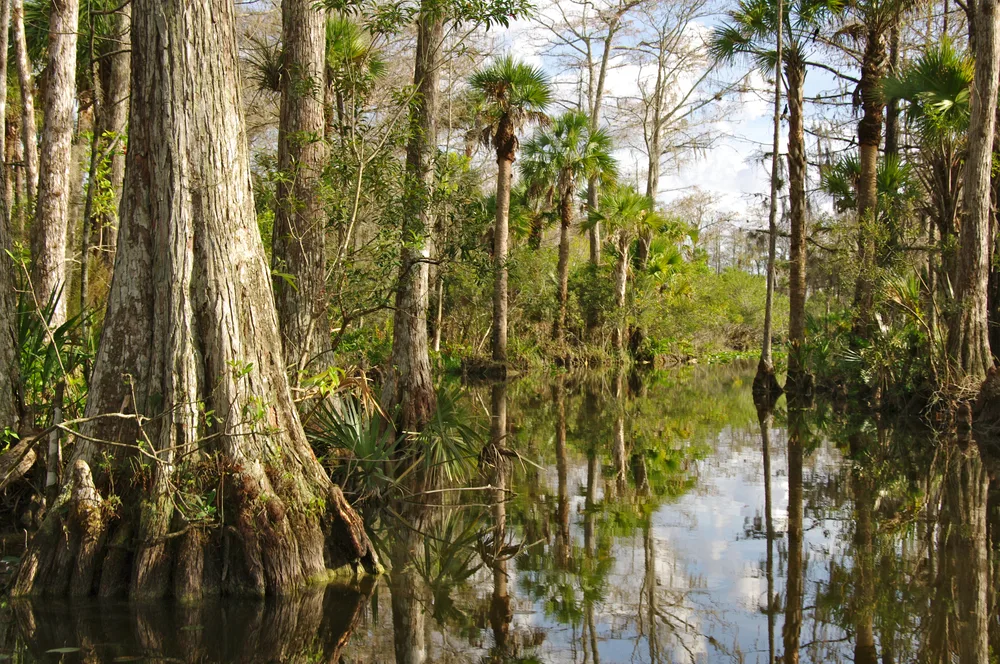
Anthony Ricci/Shutterstock
The best time to visit the Everglades is during Florida’s dry winter season, from December to May, when the weather conditions are the best for exploring the park.
According to the National Park Service, temperatures in the Everglades are warm all year round. The winter dry season, which runs from December to early May, has average high temperatures in the mid-70s.
It can get colder, especially at night, so don’t forget to pack layers even though you are visiting southern Florida. This temperature is the best for exploring since it’s not too hot.
The real reason why visiting in the winter is the best is because the weather is relatively dry. There’s only an average of one or two inches of rain during the winter months. The rain only picks up towards the middle of May. Showers that occur during the dry season are short and insignificant.
This means that winter has the best weather for exploring. You don’t want to get soaked in the rain, which you can avoid in the dry season. The humidity is also much lower, an important factor when exploring a wetland area such as this one.
High humidity makes hot days feel even hotter, so visiting during low humidity is far more pleasant. During the winter dry season, you have a higher chance of avoiding one of the primary annoyances associated with visiting the Everglades—mosquitoes.
During the winter, the annoying insects are only found buzzing around the mangrove swamps. You still need bug spray, but they’re not as omnipresent.
The dry weather also makes it easier to navigate the Everglades and see everything that you want to see. According to the official park website, visiting in the winter is the best time to see various animals.
Animals such as alligators congregate around remaining fresh water sources, making it easier to spot them. There are also more bird species in southern Florida in the winter. The dry season is also the best season to go on ranger-led programming or other guided tours.
Rangers organize events such as bird walks, plant walks, guided kayaking tours, and guided boat tours. These experiences are offered frequently at the four major visitor centers and entrances.
Although there are some in the wet season, they are more common in the dry season. These events are fun and help you learn about the unique ecosystem of the park.
One thing to keep in mind is that the winter (December-March) is the most popular time to visit the Everglades, which means some of the more popular areas of the park may be blocked off to additional visitors when there is too much traffic.
To make the most of your visit, be sure to check on the website ahead of time to see if there are timed entry slots or if you will need to make alternative plans.
Cheapest Time to Visit the Everglades
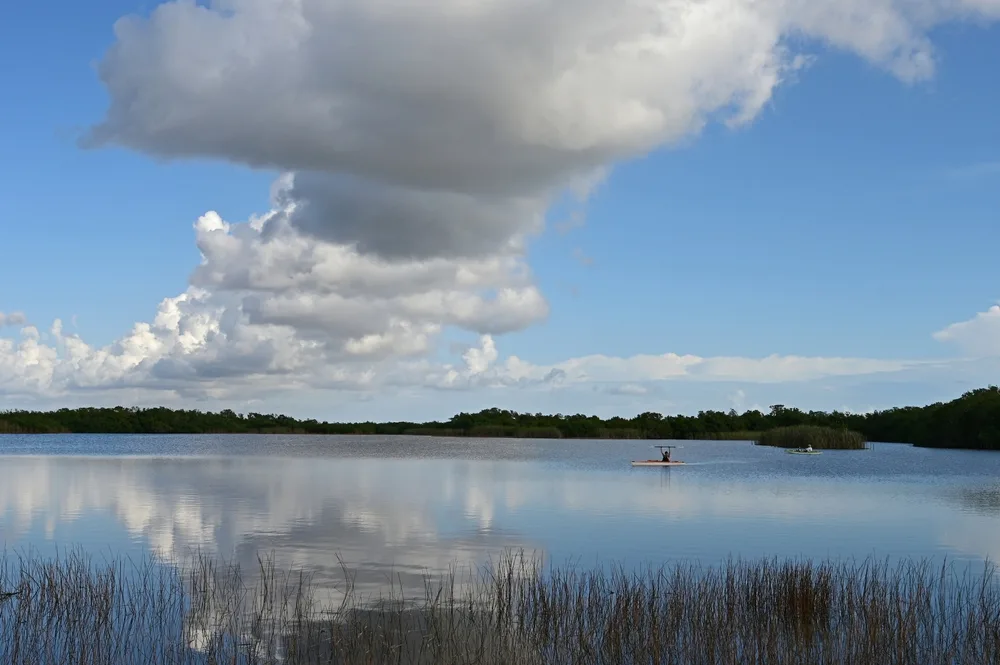
Francisco Blanco/Shutterstock
The cheapest time to visit the Everglades is in fall (September-November), when there are fewer tourists in the area near the park. The price of visiting the park itself doesn’t change throughout the year.
Entrance passes are $20-$35 (depending on if you’re on foot or in a car) no matter which month. However, fall has two days when entry to the National Park Service system is free—National Public Lands Day (September 28th) and Veteran’s Day (November 11th).
Camping fees also remain the same throughout the year, although you don’t have to pay a reservation fee during the April-November off-season.
While this is the most cost-effective accommodation, keep in mind that far fewer camping sites are available during the wet season. If you prefer to sleep in a proper bed outside of the park, then the best time to visit to save money is during the fall.
In nearby Everglades City or Homestead, many hotels offer 25-30% discounts during the fall. This is the off-season for southern Florida, and low visitor demand means lower prices.
If you are flying to Everglades National Park, the least expensive time to fly is during the fall as well. The closest airport is Miami International Airport, which has the best deals either in late May or in September and October.
Least Busy Time to Visit the Everglades
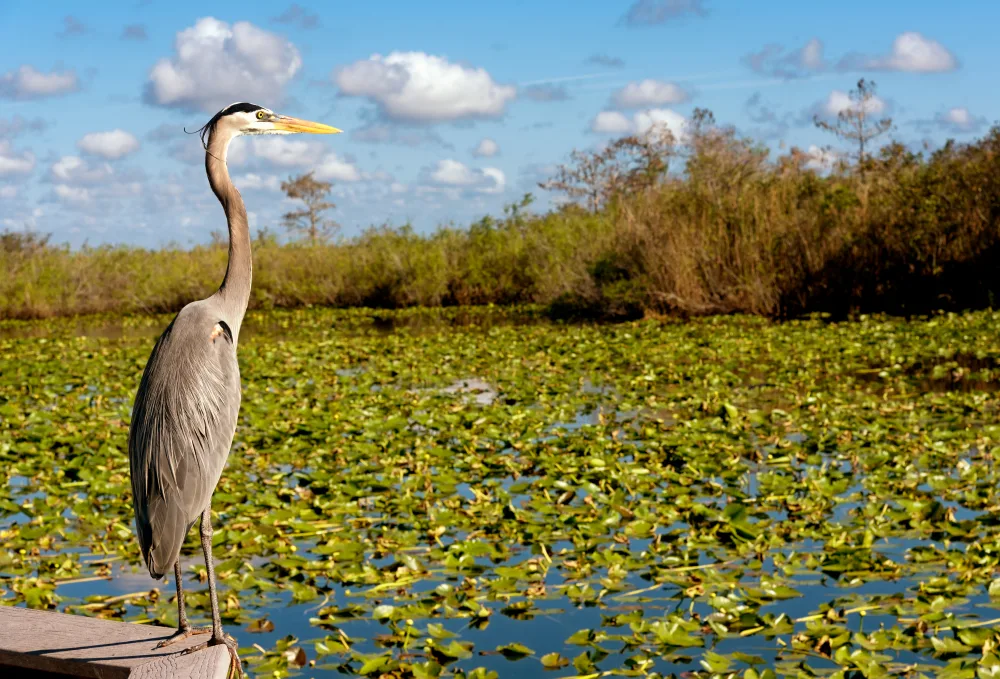
Rosanne de Vries/Shutterstock
The least busy time to visit the Everglades is in April and May, which mark the end of the dry season and the beginning of the rainy season. By April and May, temperatures aren’t as pleasant as they are in the winter.
Average high temperatures are in the mid-80s, meaning you’ll certainly break a sweat while on the hiking trail. However, it’s not as hot as it gets during the summer so it’s still possible to enjoy being outdoors.
The rains don’t start until the middle of May, and even then, they aren’t as intense as they are during the summer peak. By the end of March, the crowds begin to relent, so you have a two-month window with fewer people around and good weather.
This is a good time to go camping in the Everglades because most campsites are still open but aren’t quite as full. You can also enjoy more popular trails, such as Shark Valley, without worrying about finding good parking or constantly bumping into people.
Worst Time to Visit the Everglades
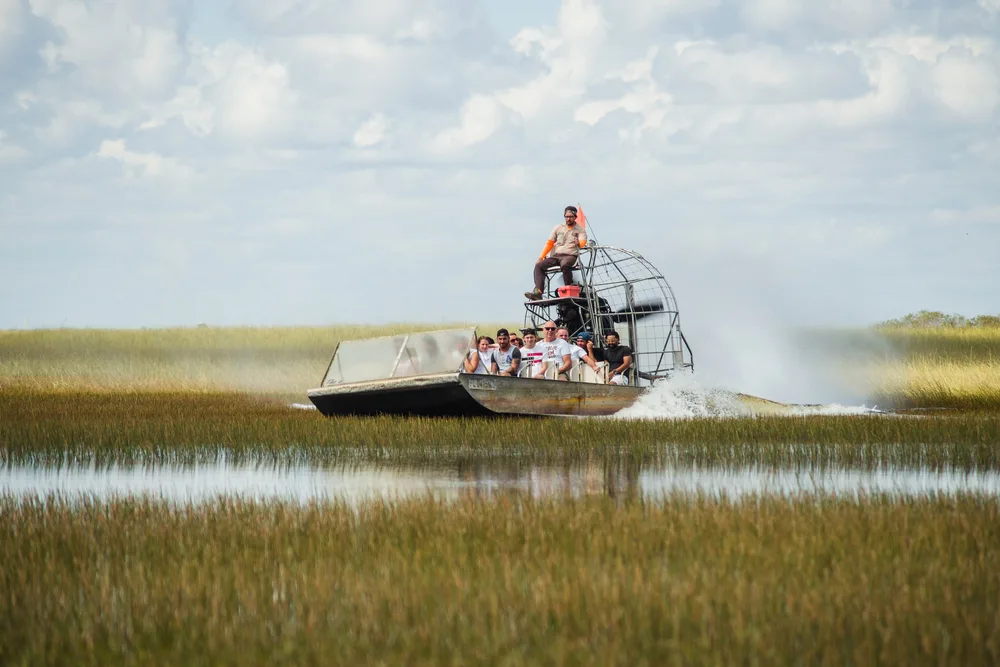
Airboat tour at the National Park Everglades in Miami, Florida on November 1, 2019/Mirigrina/Shutterstock
The worst time to visit the Everglades is during the wet season (from May to November), especially during its peak in the summer months of June-September.
The wet season in a humid climate such as the Everglades is not a joke. The official Everglades website warns visitors that due to the humidity, the heat index can feel even hotter than the 90 degrees Fahrenheit that is an average daytime temperature in an Everglades summer.
The only relief from the heat comes from thunderstorms, but that relief may feel questionable once you’re soaking wet. Summer is the Everglades’ rainiest season and torrential downpours are frequent, making hiking unpleasant, let alone camping.
That’s before we even get into the mosquito population, which comes buzzing alive thanks to all of the rain and requires high-strength repellent to survive.
Since the weather is unpleasant, most visitors avoid the Everglades during this time. That means there is also less to do. Ranger-led programming decreases drastically during this time, so you’ll be on your own for a lot of it.
Spotting animals is also harder since even the ubiquitous alligators retreat to their burrows during the wet season. However, visiting during this time ensures that you’ll have most of the park to yourself, a reward for intrepid visitors.
The landscape is at its lushest during this time, full of blooms (including rare orchids) and green jungles. It is more challenging logistically to visit during the wet season, but some say the park is even more beautiful then.
Frequently Asked Questions
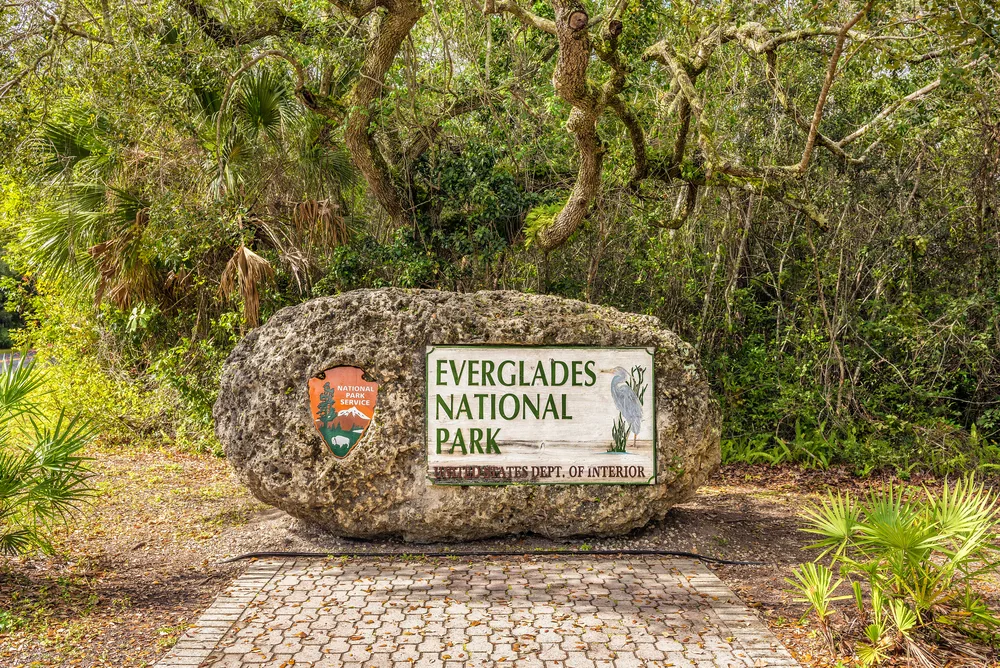
Nick Fox/Shutterstock
Here are some of the most common questions about finding the best time to visit the Everglades:
How many days do you need for Everglades?
You should spend at least three days exploring the Everglades if you want to see the park, although you can see the biggest highlights in just one day.
What is the best part of the Everglades to visit?
Shark Valley is the most popular part of the Everglades to visit since that is the starting point for tram and boat tours, and you can see alligators and birds all around.
Which is the best tour in the Everglades?
The best tour in the Everglades is a guided boat tour led by a ranger or tour operator, since the best way to see the wetlands is from the water.
Where is the best place to see alligators in the Everglades?
The most reliable alligator spotting trails in the Everglades are Shark Valley and Anhinga Trail.
When is the best time of year to see alligators in Florida?
The best time of year to see alligators is during the December-April dry season, since that is when they have to congregate around water sources.
So, What’s the Best Time to Visit the Everglades?
Plan your visit to the Everglades during the dry season, from November to April, for the best weather and the most ranger programming. The extra crowds are worth it since you are avoiding the humidity and mosquitoes of the off-season.
So, with so much to see and do and plenty of great times to visit, what are you waiting for — book your trip today and experience for yourself all that the Everglades have to offer. Happy travels!



